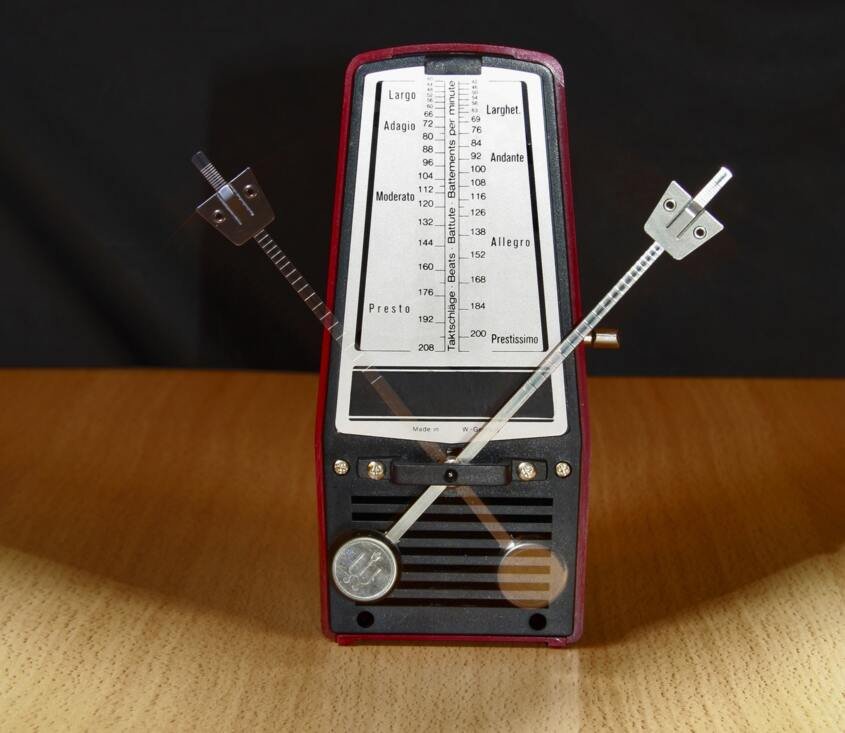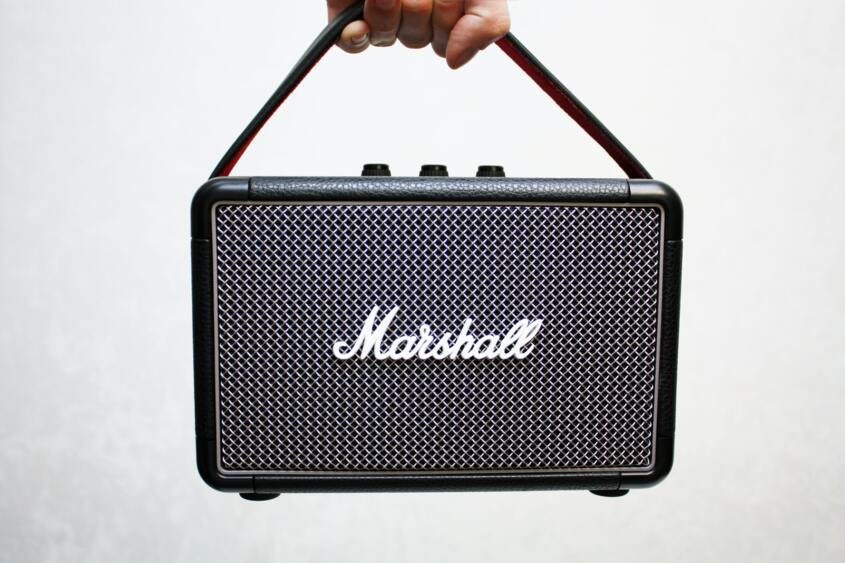Practice Tools For Music Lessons
Remember how teachers used to say that you need to practice maths more to get better at it? Well, it’s the same for any kind of instrument you’re learning to play or anything related to music.
Practice opens up room for improvement that quickens the learning process. But having a good session that adds value is just as important.
For music, you need the right tools to create an ambient environment and help you play the correct keys in symphony.
So, let’s have a look at some of the essential practice tools for music lessons you can try. Hopefully, with our detailed instructions, you would maximize the utility out of all these.
Create a Dedicated Practice Space
Before you start practicing, the first thing is to have a proper dedicated space or corner solely for it.
When you have a separate space for something, it automatically tells your brain to focus only on that specific task. So, it becomes conducive to keep off all the distractions and only focus on what you are supposed to do.
Musicians go for a quiet space where they can practice so that there aren’t any odds with other sounds. Moreover, starting to learn an instrument requires constant concentration for detailed learning.
So having an open and cozy space will inspire you to keep on going no matter how hard it seems at first.
Now, let’s check out some of the tools you can keep in your practice room that will help you learn the instrument faster.
1. Metronome

Whatever musical instrument you play, being in rhythm and sync is very important. And what is a better option to keep a tab of it other than a metronome?
A metronome is a device that produces beats or clicks at any time interval you set. This helps you calculate how many beats you can play in a minute. You can also track your progress by reaching your goal and setting the bar higher.
Using a metronome can be difficult as a beginner, but you’ll eventually get the hang of it. Then, hopefully, you’ll resort to metronome entirely to improve your sense of timing and your overall skills as a musician.
The Pro-Metronome app has various features including subdividing rhythms, drum functions, and numerous metronome sounds-all under $3.
But if you want to go for an actual metronome, Dr. Beat Portable Metronome by BOSS is one of our absolute favorites.
Here is the most reliable beat and rhythm tool that the majority of teachers on our website use!
For more information Click Here!
2. Tuner
Next up, we have another tool to put your tunes and rhythms in symphony- the tuner. A tuner stands as a must-have for all the musicians because, if the instrument you want to play is not in tune, you can’t produce good music.
We recommend a chromatic tuner as it is flexible and versatile. In addition, you can use it on instruments other than just a guitar because it shows the nearest semi-tones when you tune it.
A Professional tunning kit to tune your piano to the clearest sounds possible!
For more information Click Here!
Here is a Digital Guitar Tuner from Fender at a discounted price!
For more information Click Here!
3. Amplifier

Photo by Andrey Matveev from Pexels
This is necessary for those wanting to achieve the perfect sound that the instrument alone cannot produce.
Amplifiers make the sound quality of an instrument relatively better. Even if your stereo has a built-in amplifier, an external one just takes the sound quality to a higher level.
These devices help increase the overall volume of the sound that your instrument produces. It also boosts the speakers and subwoofers who need the correct power rating for optimal performance.
Don’t get lost with the customization of the amplifiers. Find the sound that works for you, and you’re good to go. If you’re an electric guitar player, this is something that you shouldn’t disregard at all.
Although amplifiers are not cheap, we researched for the most affordable amplifier for your guitar to have the clearest sound!
For more information Click Here!
4. Capo
Having a capo is like having an extra finger because it lets you play in different tones and riffs.
Songwriters love capos because they can get the right sound for their song without learning new chords or anything. Open chords are tough to play with just fingers, but a capo lets you do this effortlessly.
You can also experiment a lot using a half capo and explore the musician inside you.
Most guitar teachers find this capo the most comfortable to practice and play on!
For more information Click Here!
5. Pick
Guitar picks create a punch and vivid sound that your fingers alone can’t make most of the time.
You don’t have to hoard many picks, but it is good to keep an assortment of all the shapes and sizes.
It is suitable for those that want to play in rhythmic strumming styles. If you’re playing in the lead or solo, picks are just what you need to rock.
We recommend using a triangular-shaped one if you’ve just started playing the guitar.
Here is a 24-Pack Guitar Picks with different designs
For more information Click Here!
6. Guitar Strap
This might not be as essential as the other tools on our list. But if you plan to perform live sometime in the future, you need to practice while standing.
Live performances can get heavily queued, and holding your guitar for that long would be very tiring. Guitar straps come in very handy at that time.
However, it can be a bit uncomfortable at first, for which you need to practice wearing a guitar strap before your big show.
Here are 3 adjustable cotton guitar straps.
for more information Click Here!
7. Electronic Device to Listen and Record
Listening correctly is an essential job when you’re a musician or just getting your hands on an instrument. You need to know the sound before you can master it.
So, try keeping your usual music player around to listen to music whenever you want. It can be your laptop, iPod, vinyl player, or maybe just your phone.
Another thing that you need your electronic devices for is to record yourself while you are playing. Listening to your recordings helps you boost your confidence and it also helps you fix mistakes.
You can also make covers or maybe play any original song in these recordings. The more you showcase your musical abilities, the more you will be motivated to get better at them.
A smartphone is enough to record yourself, but you can also use a digital camera, tape recorders, or fancy recording devices to record.
Here is a professional microphone set with a stand, filter screen, and more!
For more information Click Here!
8. Backing Tracks
Backing tracks are sounds of the instrument that you need but cannot play simultaneously. For example, if you’re playing the guitar, you might need a drum, bass, or rhythmic guitar.
Backing tracks help you improve your timing, give you a sense of how playing in a band feels like and lets you be more creative.
There are thousands of such tracks online that you can get for free or just a few dollars.
9. Musical Stand
This is an optional choice if you need to keep your notebooks or song sheets. You can see your chords and notes from these and play more swiftly.
A complete kit of an advanced musical stand
For more information Click Here!
10. Paper
Having a pen and paper always comes in handy and not just in your music practice sessions.
You can quickly jot down lyrics if you’re into songwriting, or maybe a quick tip to yourself for the mistake that you keep repeating.
You can also set goals and write them down. This improves your efficiency and makes sure that your practicing sessions are very productive.
Don't forget your musical notebook!
For more information Click Here!
How to Practice Daily For Your Lessons?
Now that you know the essentials tools for your music lessons, have a look at our tips to practice daily.

● Be Prepared
The tools that we have mentioned earlier in the article are enough to get you all sorted. But something more important than that is your will and dedication. You need to know what you are doing and start accordingly.
● Make a Habit
You need to create triggers around you that will remind you about practicing. For example, make a specific time where you will just be practicing music. This will keep you free from other distractions.
● Be Accountable
Join a team or get someone professional to whom you’ll be accounting yourself of your practice sessions. This keeps track of what you are doing and how you are improving.
● Set Challenges
Once you master something new, you need to find something else to thrive for. This makes you consistent on your journey to perfection. You shouldn’t let anything stop you; instead, discover newer challenges for yourself.
● Take Inspiration
You can try joining live performances or music shows to see the professionals enjoying the musical world. We’re pretty sure you will not only enjoy the show but also get heavily inspired.
It is very common to forget why you’re into music in the first place, so inspirations help you come back on track.
If you have a kid who just started learning the piano, give our article a read to help them practice in a well-organized way.
Final Words
Coming to the end of our article, hopefully, you now know what tools you need for your practice sessions. These will help you get the proper sync, tunes, and rhythm.
If you’re into playing the piano, you can get yourself the best piano teacher from here. Learning online is much easier now, thanks to our expert tutors! So, get started on your musical lessons today and explore what the music world has in store for you!
Which of these practice tools do you use for your music lessons? Let us know in the comments below!
